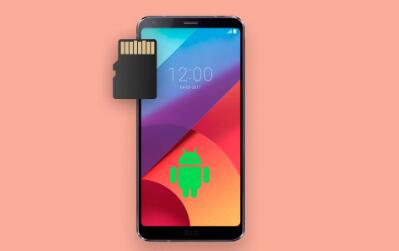When it comes to recovering data from an SD card on an Android device, it’s a process that requires careful consideration and understanding of various methods and tools available.
SD cards are widely used in Android devices for storing photos, videos, apps, and other essential files. However, like any storage medium, SD cards are prone to data loss. The reasons for data loss can vary, including accidental deletion, formatting, virus attacks, corruption, and even physical damage. Fortunately, several methods and tools can help recover lost data from an SD card on an Android device.
Common Causes of Data Loss on SD Cards
Understanding the root causes of data loss can help prevent future incidents and improve the chances of successful recovery. Here are some common causes:
Accidental Deletion: Deleting files unintentionally is one of the most common causes of data loss.
Formatting: Formatting an SD card erases all the data stored on it.
Corruption: Corruption can occur due to improper ejection, power surges, or malware.
Physical Damage: While less common, physical damage to the SD card can make data retrieval challenging.
File System Errors: Incompatibilities or errors in the file system can also lead to data loss.

Steps to Recover Data from an SD Card on Android
1. Stop Using the SD Card Immediately
As soon as you realize data is missing, stop using the SD card. Continuing to use the card can overwrite the lost data, making recovery more difficult or even impossible.
2. Check the Recycle Bin/Trash Folder
Some Android devices have a Recycle Bin or Trash folder where deleted files are temporarily stored. If your device has this feature, check it first to see if the deleted files are still there.
3. Use Android Data Recovery Apps
Several Android apps are designed specifically for recovering lost data from SD cards. Some popular options include:
DiskDigger: This app is effective for recovering photos and videos. It can scan both internal storage and SD cards.
Dr.Fone – Data Recovery: A comprehensive tool that can recover various file types, including photos, videos, messages, and contacts.
EaseUS MobiSaver: This app is user-friendly and supports the recovery of photos, videos, messages, and more.
To use these apps, you’ll need to:
Download and install the app from the Google Play Store.
Grant the necessary permissions for the app to access your SD card.
Select the types of files you want to recover.
Run the scan, and the app will display the recoverable files.
Choose the files you want to restore and save them back to your device or another storage location.
4. Use a Computer for Recovery
If the Android recovery apps are not successful, you can use a computer to recover data from the SD card. You’ll need an SD card reader and recovery software such as:
Recuva: A free and easy-to-use recovery tool that supports a wide range of file types.
PhotoRec: An open-source recovery tool that can retrieve files from SD cards even if they have been formatted or corrupted.
EaseUS Data Recovery Wizard: A powerful tool that can recover files from SD cards, USB drives, and other storage devices.
Here’s how to use these tools:
Remove the SD card from your Android device and insert it into the card reader.
Connect the card reader to your computer.
Download and install the recovery software of your choice.
Launch the software and select the SD card as the target location.
Initiate the scan, which may take some time depending on the size and condition of the SD card.
Once the scan is complete, preview the recoverable files and select those you wish to restore.
Save the recovered files to your computer or another storage device.
5. Professional Data Recovery Services
If you’ve tried the above methods without success, or if the SD card is physically damaged, it may be time to consider professional data recovery services. These services have specialized tools and expertise to recover data from damaged or corrupted SD cards. Keep in mind that professional recovery can be expensive, and there’s no guarantee of success.
Tips for Preventing Data Loss on SD Cards
While recovery is possible in many cases, preventing data loss is always preferable. Here are some tips to minimize the risk:
Regular Backups: Regularly back up your SD card data to another location, such as cloud storage or an external hard drive.
Safely Eject the SD Card: Always use the “eject” option before removing the SD card from your device to prevent corruption.
Avoid Overloading the SD Card: Don’t fill your SD card to its maximum capacity; leave some space for smooth operation.
Use Antivirus Software: Protect your Android device and SD card from malware with reliable antivirus software.
Handle with Care: Physical damage is harder to recover from, so handle your SD card with care to avoid drops or exposure to extreme conditions.
The key is to act quickly and avoid using the SD card after data loss to maximize the chances of successful recovery. Additionally, by following best practices for SD card use and data backup, you can minimize the risk of future data loss.
About us and this blog
Panda Assistant is built on the latest data recovery algorithms, ensuring that no file is too damaged, too lost, or too corrupted to be recovered.
Request a free quote
We believe that data recovery shouldn’t be a daunting task. That’s why we’ve designed Panda Assistant to be as easy to use as it is powerful. With a few clicks, you can initiate a scan, preview recoverable files, and restore your data all within a matter of minutes.
Subscribe to our newsletter!
More from our blog
See all postsRecent Posts
- What does unsupported file format mean? 2025-04-07
- What file format does cricut use? 2025-04-07
- What file format do 3d printers use? 2025-04-07










